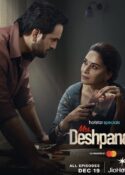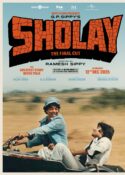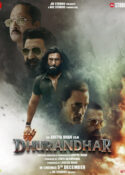 Gaurav Dayal has composed for some of the best people in the Indian music scene. He worked with Jassi and wrote Mika’s hit album Gabru. In Bollywood, you have heard his fabulous compositions on soundtracks like Say Salaam India and the wonderful Sorry Bhai. Recently, the composer/producer worked with Wyclef Jean, JD, and Shakira on her album She Wolf. Dayal is working with Neha Bhasin and even has a reality show in the works, but that is not all: He has a really cool new project that is going to get Indian beats out to the world. Get a cup of chai and have a look as Gaurav tells us all about his new loop, well, library of loops, of Classic Bollywood, and much more.
Gaurav Dayal has composed for some of the best people in the Indian music scene. He worked with Jassi and wrote Mika’s hit album Gabru. In Bollywood, you have heard his fabulous compositions on soundtracks like Say Salaam India and the wonderful Sorry Bhai. Recently, the composer/producer worked with Wyclef Jean, JD, and Shakira on her album She Wolf. Dayal is working with Neha Bhasin and even has a reality show in the works, but that is not all: He has a really cool new project that is going to get Indian beats out to the world. Get a cup of chai and have a look as Gaurav tells us all about his new loop, well, library of loops, of Classic Bollywood, and much more.
The new project – Classic Bollywood
“What I have done with Classic Bollywood is create a library of music from India Cinema that has loops of music of the 1960s until now. It is covered by era, so it has not only traditional but also how Bollywood sounds now. Everything was inspired from the music of the eras in terms of scale, feel and melody. There are a bunch of different styles. I have made them as loops of separate instruments like string sections, mandolins, flutes, etc., because what a lot of hip-hop artists want to do is sample from old songs. They want to sample string sections from old Indian songs and then put them with hip hop beats and stuff, but they can’t do it because of copyright issues and thing like that. It is separated and isolated, otherwise they would have to sample the entire song, which have beats with percussion and strings and vocals and all that. Here [in this library] they are getting every layer, so if you want a vocal layer, you have it, if you want a strings layer, fine. There are about 11 Construction Kits with a total of 3.5 GB, and they are in varying tempo and keys as well. So, whatever software you are using, you can just plug it in and shift to whatever key and tempo you are working in. We offer it completely copyright free for anybody to use. I am the composer and owner and I say once you buy these libraries use it, sample it, use it any way you want: make hip-hop, rock, pop, orchestral; whatever you want. This gives access to a lot of people who want to sample Indian music. This is also targeted to newer producers, people who want to use it, but don’t know where to get it. It has been selling really well. It actually has become the number one seller at Producerloops.com.”
Gaurav added that the library could be used in a myriad of musical disciplines and especially in Bollywood. It can either be sampled for just one song or used as part of a background score. “It is also meant to recycle back to the Bollywood industry, for people who don’t have time and the budget to actually go out and record with musicians. We are offering a lot of that on the libraries, from flute sections to vocals, to choruses both male and female, with many singers. There are also some typical phrases and sounds used in Hindi cinema. What we have done is given Indian vocal phrases; most libraries have come with just some basic alaps and things like that. They have never given songs; what I have done has entire songs.”
Creating the loops – the musicians
“To create the loops, of course, I was ready with the pre-production, already having composed the parts, and I used some of the best musicians out of New Delhi, which is where I live and work. I used a 12-piece string orchestra using violins, etc. There are some people who have done certain libraries before, but no one has ever covered Indian string sections, because it requires coordination of a lot of musicians and it has not really been viable before now. Today, we really can’t accommodate a 40-piece orchestra in studios. Nobody has the time or the budget to do that. So, we record a 12 piece, but we record it over and over – 8 to 16 tracks of that, so it sounds like a larger orchestra. I used various instruments like rabab and mandolin and I used the best players who play with classical musicians.”
 New recording techniques- tubes and vintage microphones
New recording techniques- tubes and vintage microphones
Getting the correct sound was also vital to Gaurav’s vision for the project and he used some new ideas to get the old sounds. “So, what I did was use all the vintage gear I have. I have a lot of tube gear from the 60s, special designer gear, by some eccentric designers from the US and UK (laughs). I used great gear, very appropriate, very close to emulating the kind of gear that was used at that time for the recording, so retaining not only the musical styles of those eras, but also the recording and the technique styles. I used this [tube] gear from a company called Thermionic Culture. Vic Keary [founder and designer of Thermionic Culture] from England; he is supposed to be eccentric. Most people are going digital and creating cleaner gear, which is less noise, but what he is doing is taking old Russian valves discarded from the army and using them to make that old retro kind of sound. What has happened as we have progressed with music and technology is that what man wanted to do was get cleaner, purer, more accurate sound, but when you got to digital, what you realize is that it was a character of those tubes, which was creating that sound. I mean I still have records and a record player because that sounds so much better than CD. It is warmer, it is bigger, it is wider and it is analog, so it is like it is pure sound. That is what we tried to do because that era also had a “sound”; it is not just a recording. If I used completely digital gear, it would not sound the same. It would sound a lot sharper, brighter, cleaner, but not that mid rich kind of tone, that saturated tone, which tubes bring you. Also, most of the libraries that are out there now have solo microphones but I own a lot of vintage microphones so we used those as well. What we did was use stereo techniques with those microphones to create a more depth of field, a larger, wider sound space, so it sounds as if you are right in front of them. Recording this way is the first ever.”
The inspirational spark for Classic Bollywood
“When I was young and I was buying sample CDs from various bands for my music, I used to wonder, how do people do this and how do they put it together? I wanted to do that about 8-10 years back, but I didn’t have the experience or the technology or the musical sense. However, after Slumdog Millionaire, Bollywood has suddenly come on the Hollywood map. In fact, I work with this company called Crucial Music and with another company called Rumblefish in the US. They are music-licensing companies, and you know what is on the top of their list for demands? Bollywood music. It was not rock, it was not pop, it was not orchestral, it was Bollywood. I said to them, you want to license Bollywood music for Hollywood films? Are you serious?? I instantly licensed them, like, 10 of my tracks, and that is when it struck me that if Hollywood is looking for Bollywood songs, what about those producers that don’t want songs? Producers that want to incorporate it in the background – suppose there is an Indian sequence happening – what if they want to create an oriental kind of hip-hop? There aren’t many libraries for them to take from; there are only one or two, three max, which have been recorded some time back, and they really are not great sounding, to be honest. That is what clicked in my mind.
I started with a small library called Bhangra Elements; this was about 3 to 4 hundred MB of Bhangra sounds. I started selling from my own site and from www.producerloops.com. Producerloops later contacted me and said you are trying to make this Bollywood library – would you want to do it with us exclusively initially, market it with us, and we will give you a major commission out of it? I am like, okay, fine; they sent me advance and I just started working. They love my quality. I have gotten more response from companies abroad then India actually, companies like Loopmasters and Big Fish Audio. They love the audio, the love the content, because it is unique.”
 Other projects – Gaurav’s label
Other projects – Gaurav’s label
“I have started my own music label. I have 2-3 artists; one of them is prominent artist Neha Bhasin – she sang in Fashion, she sang the song Kuch Khaas Hai. She is super. I met her about 10 years back. We have done a big production with Reebok; they are doing a massive campaign with our music. So, we are doing a lot of different things and exploring a lot of different avenues.”
New York with Shakira, JD, and Wyclef Jean
“We were doing this track named Bollybreaks with Neha Bhasin. We were looking for a rapper to put some stuff down. Somehow, Neha knows Aadesh Shrivastava, who is a music director from Bombay, and he is friends with JD and Wyclef. We wanted to get a rapper, but we did not think of Wyclef. In fact, we are like, that is really far fetched, and I don’t think they are going to do it. So Neha played that track for them, and we said, ‘JD can you help us out and get us a decent rap star, somebody from the US that can be part of our record?’. Wyclef heard that and said, OK, why don’t I do it? I was like naaaa, you are kidding (laughs) but they loved Bollybreaks. Wyclef did his part on it and then JD, who was more in charge of production, asked me, would you like to coproduce with us, something new we are doing for Shakira? We are doing a new album, at that time it had some other name but is now named She Wolf. I was like, I think these guys are just playing with my emotions, it is not really on and not going to happen (laughs). So, I go to New York and I was there for a month. I thought that they weren’t serious, but I kept trying the number, and ultimately JD got back in touch with me. I think it was 12 o’clock at night and I was in my NY apartment, in Queens actually. Wyclef and JD’s studio is called Platinum, and it is right next to Times Square. Platinum is amazing, it has everything. They invited me to come do a session. It was 12 o’clock at night, it was raining, and I was like, are they serious, but I went to the studio and we actually started doing stuff. That is how I got to work with him. When I worked with Shakira all they made me do was hip-hop productions with Indian sounds. That is on one of the remixes and comes on the album She Wolf. They kept encouraging me and saying why don’t you give us some Indian sounds mixed with your flavor of dance music?”
Beat Factory
Besides writing his own music, developing his music label and producing, Gaurav also opened a school to teach perhaps the next Gaurav Dayal the techniques of music production and sound engineering. “Beat Factory was opened 2 years ago and is the first institution we have opened in Delhi that teaches music production and exposes the student to real industry work. We have all Apple computers. We teach two things: one is sound engineering – it is in depth with all the analog gear we have and the digital – all the concepts of recording acoustics and everything. Besides that, we teach music production. We are sort of the first institute of our kind in that way, because the one other school just teaches sound engineering. You can’t play keyboard, any instrument, no problem, we teach you by an object goal oriented program where you can use the keyboard as an interface and actually produce kick ass dance music or whatever you want to do. Plus the students get access to the big names; one day they are recording with Shubha Mugdal, one day they are recording KK. The jingles I do for Samsung all happen with the students involved. They actually start getting to be a part of the industry while studying.”
 Working in Bollywood
Working in Bollywood
He also gave us his take on films and the music industry in India. “Cinema here is improving, there are better concepts and they are getting the chance to do more mainstream things. This market is booming and you know the quality is going to boom in the future even more. The trends that filmmakers are coming up with that are new, compared to how Bollywood used to be, have changed a lot, and also in terms of new people getting a chance, which is really cool. Like today for music directors, if you have a great set of songs then you can go to Bombay and meet the right people and actually get a job. It is not that hard breaking into the industry – it is not a name game so much any more. What does happen with movies here though is that you get involved in a couple of projects and some of them stall because of finances, or something else that happens. That is a little disappointing, especially if you have done some good songs. I have done this amazing movie called Kill Chabbra that is stuck in production, and some of my best songs are in there. KK has sung in it. I have got Shilpa Rao – it is completely new and I feel it is some of the freshest stuff I have done – ever.
What’s next in Bollywood
A new film with a very intriguing concept! “I am back to work in Bollywood in September. I can tell you the concept of the movie, which is not titled yet, but besides that I am really not allowed to tell you anything else. It is based around how India would be if it was still under British rule, if we were not independent. It has been shot in Singapore and Africa and various places. I am working with a producer from the Ukraine and the US, so it is kind of weird (laughs). This is like the next level for me, a bigger budget film than what I have done before. Like I said before, I really wantKill Chabbra to come out. That has got some of my key tracks and I am really dying for that movie to come out. That might do some good for me – still really waiting for the right break!”
Gaurav and I tend to go on a bit when we chat, but it is always filled with fabulous insight into the passion he puts into his work. I have heard a few of the loops on Classic Bollywood and the quality blew me away. So much depth to the sound and some fabulous beats – it is sure to do incredibly well. I wish him the best of luck with this project and all his projects to come. Keep an eye out for his name because you are sure to get some brill music! Oh, and Mira Nair, if you happen by chance to be reading this, Gaurav says he is really dying to do some work for your movies, “because she is making the kind of movies that requires just the kind of work and soundtracks that I do.”









